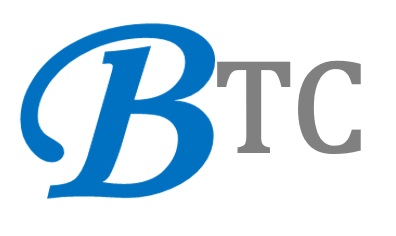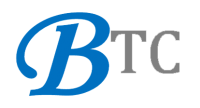
4 Lessons for Building Diverse Teams.
Companies often hire the exact same type of employee over and over. The thinking is that if employee X is doing a great job and everyone gets along with them, then the smart thing to do must be to hire more people exactly like them. This mentality leads to hiring managers seeking out candidates that identically mirror their existing workforce. They’ll look for the same educational background and skillsets, source from the same narrow list of companies, and look for similar personality traits during interviews. Before you know it, you end up with an entire staff that looks, thinks, and — to a degree — acts almost exactly the same. Not only does this tend to result in a reduction in diversity of thought (among other aspects of diversity), but it can prevent the company from realizing its true potential. Fresh new perspectives are necessary to bring forth bold new ideas, challenge long-standing internal thinking, and provide a more complete internal representation of the customer base
If something yields the result we want even once, it’s human nature to do that exact same thing again. In general, people are creatures of habit. Just think about how many times you’ve gone to your local coffee shop and ordered the exact same latte. Once you found the mixture of ingredients that your taste buds enjoy the most, you probably chose to stick with that.
However, in business, this “stick to what you know” mentality often means that companies hire the exact same type of employee over and over. The thinking is often that if employee X is doing a great job and everyone gets along with everyone, that the smart thing to do must be to hire more people exactly like them. This mentality leads to hiring managers seeking out candidates that identically mirror their existing workforce. They’ll look for the same educational background and skillsets, source from the same narrow list of companies, and look for similar personality traits during interviews. Before you know it, you end up with an entire staff that looks, thinks, and — to a degree — acts almost exactly the same.
Not only does this tend to result in a reduction in diversity of thought (among other aspects of diversity), but it can prevent the company from realizing its true potential. Fresh new perspectives are necessary to bring forth bold new ideas, challenge long-standing internal thinking, and provide a more complete internal representation of the customer base. In his article, “The Importance of Diversity of Thought,” journalist Rick Bowers writes that big ideas come from unique perspectives. Safe thinking won’t change the world, but diverse thinking can. Think about the impact of inventions like the iPod or the smartphone. Great ideas like those were generated from teams willing to challenge the status quo, to try things untried, and maybe even to fail before wildly succeeding. Most companies say they want their employees to be dynamic thinkers and provide the company with big new ideas. What most don’t realize is that for this to actually happen, you need a wide variety of people engaged in the conversation.Insight Center CollectionBuilding Tomorrow’s WorkforceHow the best companies identify and manage talent.
There are many different aspects of diversity. Diversity of thought, as discussed above, is a key factor in building successful teams. Additionally, diversity of race, gender, sexual orientation, geographical location, and more should also be embedded into a company’s hiring practices. Anna Powers writes in a 2018 Forbes article that a study by the Boston Consulting Group (BCG) found that diversity increases the bottom line for companies. The study also found that “increasing the diversity of leadership teams leads to more and better innovation and improved financial performance.” Particularly amongst management ranks, companies tend to lack the racial diversity that frequently leads to a stronger bottom line, a leadership team more representative of their entry-level staff and the communities they serve, and an increase in creative strategic thinking.
This past year, many companies declared a commitment to increase the number of people of color they hire. For instance, Adidas has promised that over the next 5 years, at least 30% of all their open positions will be filled by Black and Latino candidates. Similarly, by 2025, Google promises that 30% of their leadership positions will be filled by those from underrepresented groups. Additionally, back in August, more than 25 companies, such as JP Morgan Chase and Amazon, vowed to hire 100,000 people from low-income Black, Latino, and Asian communities by 2030. These pledges are fantastic, but long overdue. More widespread commitments are needed to increase racial diversity across corporate America.
I’ve spent 20 years of my career building diverse teams at companies such as Capital One and Square. The senior leadership team I helped build at Square is over 50% diverse and at Capital One, it’s 80% people of color and female. At Square, I serve as a strong voice throughout the entire organization championing the company’s diversity efforts in partnership with our I&D team. Here are some lessons I’ve learned along the way in my own work building diverse teams:
- Know that it starts at the top. While not impossible, it will likely prove difficult to gain traction on diversity initiatives without the expressed commitment from your C-suite. If a company’s top executives do not view their lack of diversity as they would any other business problem, demanding that key players focus on solving the issue, then it’s unlikely that much action will be taken across the broader organization. The bottom line is, whatever your CEO declares to be important is what everyone else will focus on.
- Publicize aspirational benchmarks and/or goals. You can’t just wish better diversity numbers into reality. Hiring managers and recruitment teams should be held to specific aspirational benchmarks or goals that will help yield the desired results. For instance, consider requiring that a certain percentage of all interviews conducted are with qualified candidates from underrepresented groups.
- Diversify your interview panels. There have been studies that suggest hiring managers tend to hire people who look like them. It’s part of our subconscious mind to want to be around others with whom we easily identify. In addition to requiring that everyone with hiring authority completes unconscious bias training, you should also ensure that your panel of interviewers itself is diverse, in order to mitigate biased hiring.
- Review the requirements you list on job descriptions. Rethinking — and in some cases even relaxing — the requirements you list as mandatory can lead to a larger eligible pool of candidates from diverse backgrounds. Consider reevaluating whether a college degree is truly necessary for certain roles. If you can accept superior results on critical thinking assessments as a substitute for a required number of years of work experience, and if your onboarding and training programs are of high quality, this will allow you to invest and develop your workforce over time.
Companies that want to thrive in the future need to build a workforce for the future; not simply a replication of the past.
This post is written by: Naomi Wheeless.
Original Post Link: https://hbr.org/2021/05/4-lessons-for-building-diverse-teams

